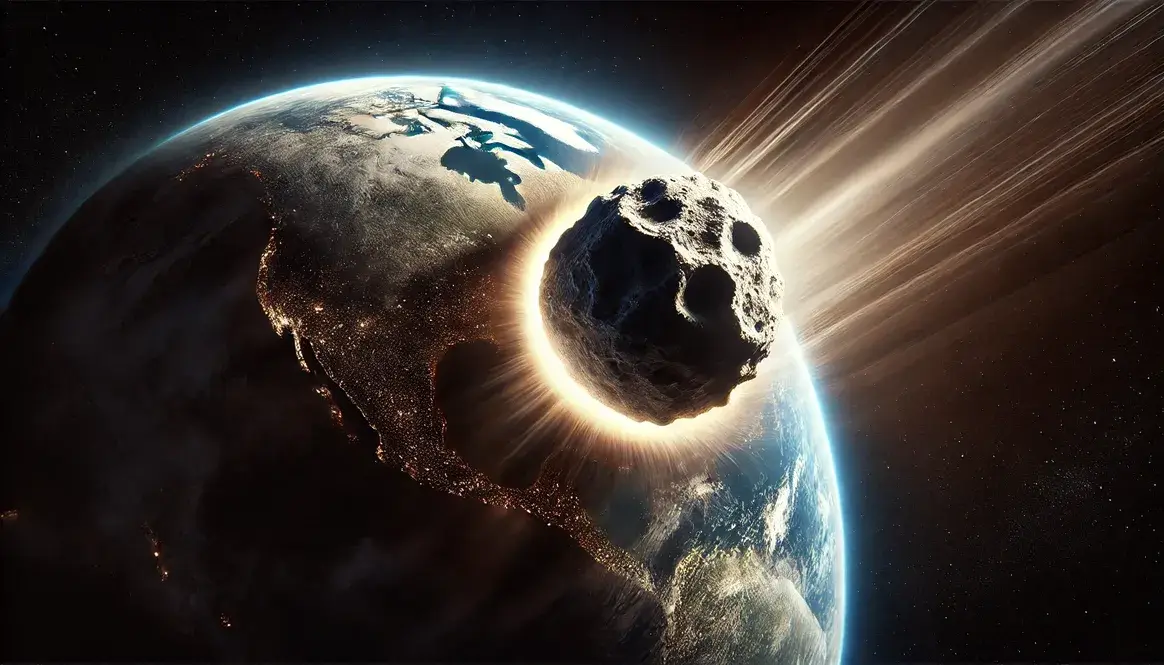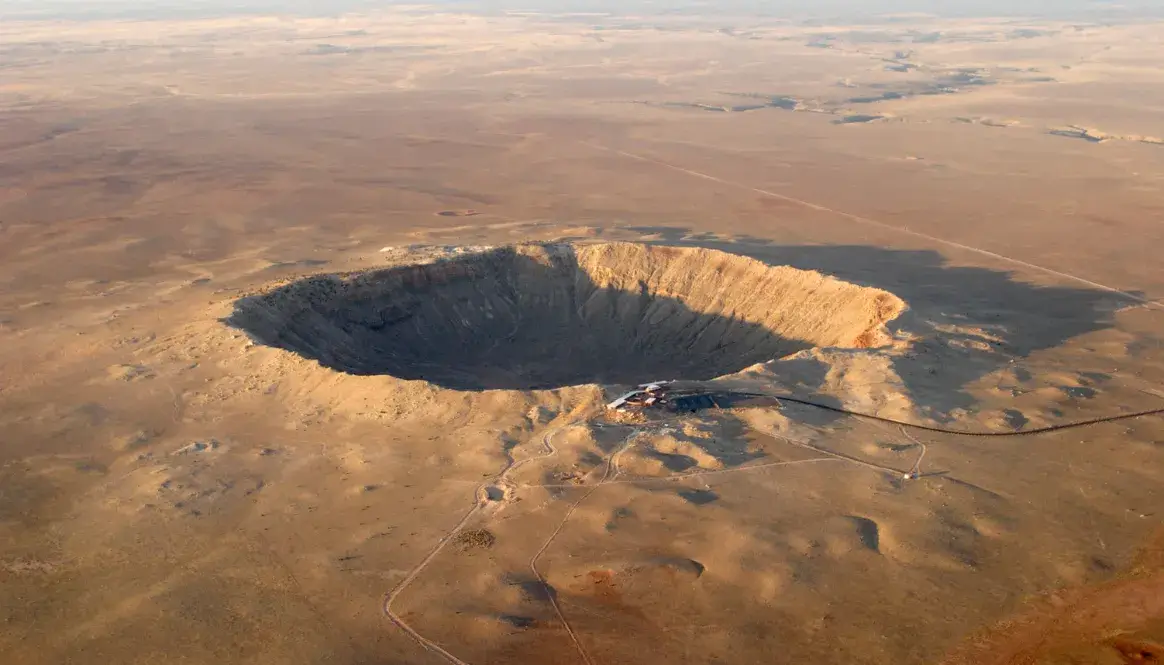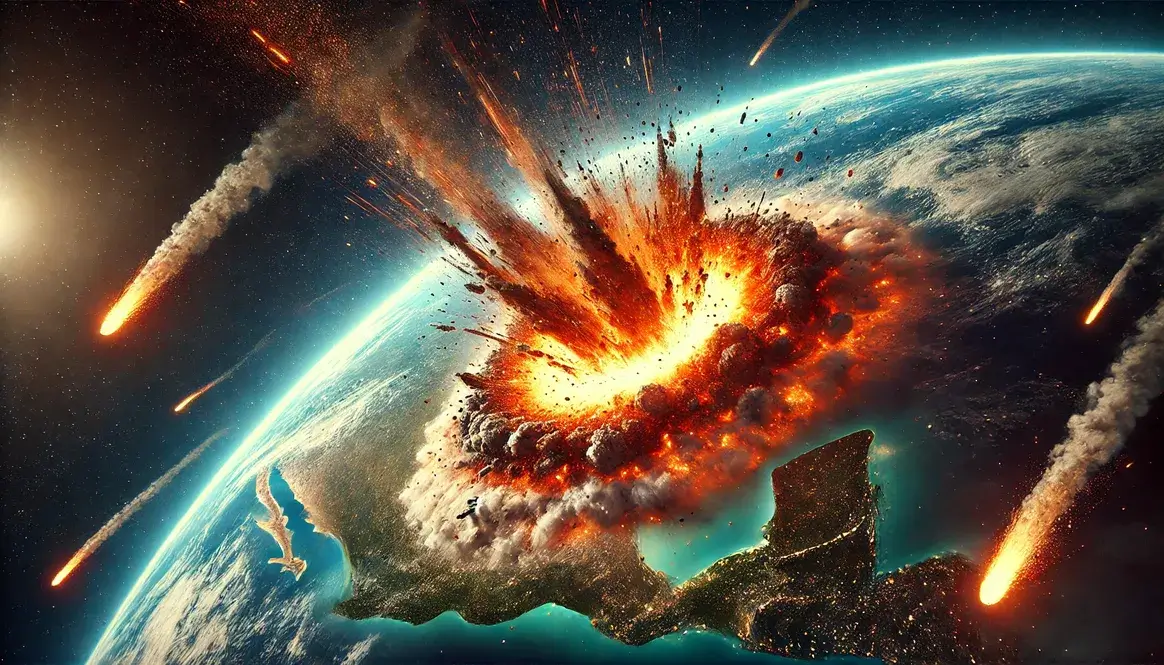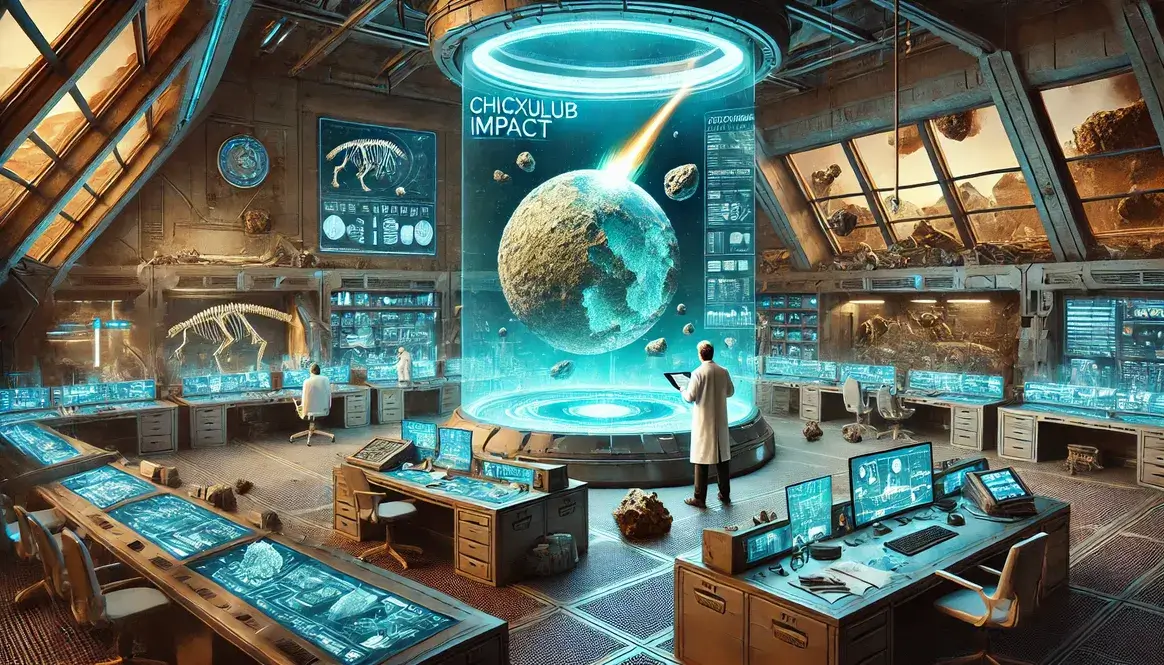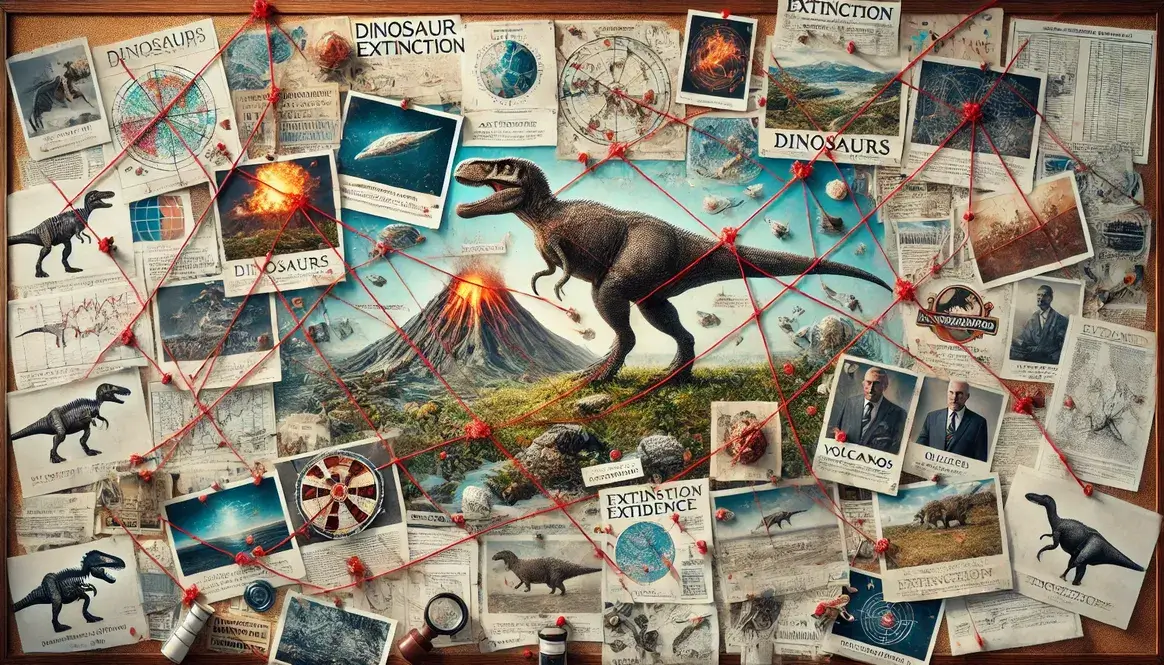The Chicxulub impact event stands as one of the most significant moments in Earth’s geological history. Its effects were so profound that they reshaped the course of life on our planet.
About 66 million years ago, a massive asteroid slammed into what is now the Yucatan Peninsula in Mexico, creating the Chicxulub crater. This cosmic collision marked the end of the Cretaceous period and triggered a mass extinction event that wiped out approximately 75% of plant and animal species on Earth, including most dinosaurs. The Chicxulub impact serves as a stark reminder of the powerful forces that can shape life on our planet.
How Powerful Was Chicxulub Impact: A Closer Look
When we examine the Chicxulub impact, the sheer scale of its power becomes apparent. Let’s break down the numbers and put them into perspective.
The power of the Chicxulub impact was truly staggering. To answer the question directly: The Chicxulub impact released energy equivalent to about 100 million megatons of TNT. To put this in perspective, it’s like setting off all the world’s nuclear weapons at once – and then some.
This colossal release of energy had far-reaching consequences. The impact vaporized rock, kicked up a massive dust cloud, and triggered global climate changes. The force was so great that it caused widespread wildfires, massive tsunamis, and intense earthquakes. In essence, the Chicxulub impact briefly transformed parts of Earth into a hellscape, setting the stage for one of the most significant extinction events in our planet’s history.
Size and Speed of the Chicxulub Asteroid
The size and speed of the Chicxulub asteroid were key factors in its devastating impact. Let’s examine these characteristics more closely.
Estimating the Asteroid’s Dimensions
Scientists have used various methods to determine the size of the Chicxulub impactor. These include:
- Crater size analysis
- Geological evidence from the impact site
- Computer simulations of the impact event
After decades of research, there’s a general consensus among scientists about the asteroid’s size. Most estimates suggest the Chicxulub asteroid was between 10 to 15 kilometers (6 to 9 miles) in diameter. That’s roughly the size of Mount Everest!
| Dimension | Estimate |
|---|---|
| Diameter | 10-15 km |
| Mass | ~1 trillion metric tons |
Table 1: Estimated dimensions of the Chicxulub asteroid
Velocity at Impact
The speed at which the Chicxulub asteroid struck Earth was mind-boggling. Scientists estimate it was traveling at about 20 kilometers per second (45,000 mph) when it hit. That’s more than 20 times faster than a speeding bullet!
Several factors influenced the asteroid’s velocity:
- Orbital mechanics: The asteroid’s path through space determined its approach speed.
- Earth’s gravity: As the asteroid neared Earth, our planet’s gravitational pull accelerated it further.
- Atmospheric entry: While the atmosphere slowed smaller objects, the Chicxulub asteroid was so large that it barely slowed down at all.
This combination of massive size and incredible speed is what gave the Chicxulub impact its earth-shattering power. The energy released upon impact was enough to cause global devastation, including widespread fires, massive tsunamis, and long-lasting climate effects that ultimately led to the extinction of many species, including the non-avian dinosaurs.
Energy Released by the Chicxulub Impact
The energy unleashed by the Chicxulub impact was truly astronomical. To comprehend its magnitude, we need to break it down into measurable units and relatable comparisons.
Quantifying the Impact Energy
Scientists use various units to measure the energy released by cosmic impacts. For the Chicxulub event, the most commonly used unit is the “megaton of TNT.” This unit represents the energy released by one million tons of TNT exploding.
The estimated energy release of the Chicxulub impact is staggering:
- Megatons of TNT: Approximately 100 million megatons
- Joules: About 4.2 x 10^23 joules
- Hiroshima atomic bombs: Equivalent to about 2 billion Hiroshima bombs
To put this in perspective, the energy released by the Chicxulub impact was more than a billion times greater than the energy from volcanoes during the same period.
Comparison to Nuclear Explosions
When discussing the power of the Chicxulub impact, comparisons to nuclear weapons are often made. However, these comparisons can be both illuminating and misleading.
The Chicxulub impact released energy equivalent to about:
- 10 million of the largest nuclear bombs ever tested
- All nuclear weapons on Earth detonated simultaneously… multiple times over
| Comparison | Energy Equivalent |
|---|---|
| Chicxulub Impact | 100 million megatons |
| Largest nuclear bomb (Tsar Bomba) | 50 megatons |
| All current nuclear weapons | ~15,000 megatons |
Table 2: Energy comparison between Chicxulub impact and nuclear weapons
While these comparisons help illustrate the immense power of the impact, they can be misleading for several reasons:
- Distribution of energy: The impact’s energy was released over a larger area and longer timeframe than a nuclear explosion.
- Nature of effects: The impact had unique effects, like ejecting material into the atmosphere, that nuclear explosions don’t replicate.
- Long-term consequences: The impact’s effects lasted for years, altering global climate in ways different from theoretical nuclear winter scenarios.
It’s crucial to remember that while these comparisons provide a sense of scale, the Chicxulub crater’s formation and its global effects were unique events in Earth’s history, far surpassing any human-made explosion in both power and long-term consequences.
Chicxulub vs. Other Known Impacts
To truly appreciate the power of the Chicxulub impact, it’s helpful to compare it to other known impact events in Earth’s history. This comparison not only highlights the extraordinary nature of the Chicxulub event but also provides context for understanding the scale of cosmic collisions.
Largest Known Earth Impacts
Earth has experienced numerous significant impacts throughout its 4.5-billion-year history. Here are some of the most notable:
- Vredefort impact: Occurred about 2 billion years ago in what is now South Africa. It created a crater estimated to be 300 km in diameter.
- Sudbury impact: Struck about 1.85 billion years ago in Ontario, Canada. The original crater is believed to have been about 250 km wide.
- Popigai impact: Happened around 35 million years ago in Siberia, Russia. It left a crater approximately 100 km in diameter.
- Chesapeake Bay impact: Occurred about 35 million years ago off the east coast of North America. The crater is about 85 km wide.
Where does Chicxulub rank among these giants? While not the largest in terms of crater size (estimated at about 150 km in diameter), the Chicxulub impact stands out due to its catastrophic effects on global climate and life. Its timing and location made it particularly devastating, leading to the extinction of non-avian dinosaurs and many other species.
Comparison to Modern Impact Events
In more recent times, Earth has experienced smaller but still significant impact events. These modern examples help us understand the potential dangers of cosmic impacts and the importance of ongoing research and monitoring.
Tunguska Event
On June 30, 1908, a powerful explosion occurred over Siberia, flattening about 2,000 square kilometers of forest. Key facts about the Tunguska event include:
- Estimated energy: Equivalent to 10-15 megatons of TNT
- Object size: Believed to be about 50-60 meters in diameter
- Unique feature: The object exploded in the air rather than impacting the ground
Chelyabinsk Meteor
More recently, on February 15, 2013, a meteor exploded over Chelyabinsk, Russia. This event provided valuable data for scientists studying cosmic impacts:
| Aspect | Chelyabinsk Meteor |
|---|---|
| Energy released | ~400-500 kilotons of TNT |
| Object size | ~20 meters |
| Injuries | Over 1,600 (mostly from shattered glass) |
While these modern events were significant, they pale in comparison to the Chicxulub impact. The Tunguska event released only about 0.0000015% of the energy of Chicxulub, while the Chelyabinsk meteor was even smaller.
These comparisons underscore the truly exceptional nature of the Chicxulub impact. Its power far exceeded any impact event in recent history, making it a unique and pivotal moment in Earth’s geological and biological past. Understanding these differences helps scientists better prepare for potential future impacts and assess their risks to our planet.
Immediate Effects of the Chicxulub Impact
The moment the Chicxulub asteroid struck Earth, it set off a chain of catastrophic events that would reshape the planet’s surface and atmosphere in seconds, minutes, and hours.
Crater Formation
The Chicxulub crater formation was a violent process that occurred in mere minutes. The impact created a massive crater approximately 150 kilometers in diameter and 20 kilometers deep. To visualize this, imagine a hole the size of the state of New Jersey, deep enough to swallow Mount Everest.
The crater formation process happened in stages:
- Contact and Compression: The asteroid vaporized upon impact, releasing enormous energy.
- Excavation: Material was ejected from the impact site, creating a temporary cavity.
- Modification: The unstable crater walls collapsed, forming a wider, shallower final crater.
Earthquakes and Shockwaves
The Chicxulub impact triggered seismic activity on a scale never seen in recorded history. The magnitude of these earthquakes is estimated to have been:
- Local area: Magnitude 10+ (off the Richter scale)
- Global effect: Magnitude 9-10 earthquakes worldwide
Shockwaves from the impact circled the globe multiple times, causing:
- Massive tsunamis in nearby oceans
- Widespread destruction of forests and other habitats
- Triggering of volcanic eruptions and landslides worldwide
Thermal Radiation
The heat generated by the Chicxulub impact was intense and far-reaching. The thermal radiation effects included:
- Immediate area: Temperatures reaching thousands of degrees Celsius, vaporizing everything within hundreds of kilometers
- Global effect: A brief but intense heat pulse that likely ignited wildfires across much of the planet
This heat blast had devastating effects on nearby life forms:
- Instant incineration of animals and plants in the immediate vicinity
- Severe burns and heat-related deaths extending thousands of kilometers from the impact site
- Ignition of vast forest fires, leading to widespread habitat destruction
Long-Term Consequences of Chicxulub
While the immediate effects of the Chicxulub impact were catastrophic, the long-term consequences would prove even more profound, reshaping Earth’s climate and biosphere for years to come.
Global Climate Change
The impact triggered a phenomenon known as “impact winter,” similar to the concept of nuclear winter. This climate shift was characterized by:
- Global cooling due to sunlight-blocking atmospheric dust and aerosols
- Reduced photosynthesis, leading to widespread plant die-offs
- Collapse of food chains in both terrestrial and marine ecosystems
The duration of these climate effects is still debated, but most scientists agree they lasted for at least several years, with some effects potentially persisting for decades.
Mass Extinction
The Chicxulub impact led to one of the most severe mass extinctions in Earth’s history. The toll on life was staggering:
- Approximately 75% of plant and animal species went extinct
- Non-avian dinosaurs were completely wiped out
- Marine reptiles like plesiosaurs and mosasaurs disappeared
Why did some species survive while others perished? Several factors played a role:
- Size: Smaller animals generally fared better, needing fewer resources to survive
- Habitat: Freshwater environments were less affected, protecting species like crocodiles
- Adaptability: Species that could hibernate or live off decaying matter had an advantage
- Location: Some areas were less severely impacted, serving as refuges for certain species
Geological and Atmospheric Changes
The Chicxulub impact left lasting marks on Earth’s geology and atmosphere:
Geological changes:
- Formation of the Chicxulub crater, altering the Yucatan Peninsula’s structure
- Global distribution of a distinctive layer of iridium-rich clay at the K-Pg boundary
- Triggered increased volcanic activity in some regions
Atmospheric changes:
- Short-term increase in atmospheric CO2 from vaporized rock and forest fires
- Long-term cooling due to sulfur aerosols and reduced solar radiation
- Altered atmospheric composition, affecting global weather patterns for years
These geological and atmospheric changes played a crucial role in shaping the post-impact world, setting the stage for the evolution of new species and the rise of mammals as the dominant land vertebrates.

